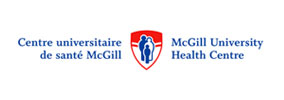
ACAR’s researchers are putting their energy into creating new, more refined models of autism and other neurodevelopmental conditions. Researchers with expertise in fields such as stem cell technology, genetics, brain imaging, biomarker development, and genome sequencing are developing and using new model systems to study what is going on at a genetic or cellular level and to experiment with interventions that could lead to new and effective care options.
Research Model Highlights
Genetics
Lan Xiong
Dr. Xiong’s research centers around the gene discovery for some psychiatric and neurodevelopmental disorders and the relevant underlying genetic mechanisms, applying various statistical methods and genetic technologies. She is particularly interested in the polygenicity mechanism and potential epigenetic partitioning of heritability of some psychiatric and neurodevelopmental disorders by using special family cohorts and some isolated consanguineous populations. She has also been actively involved in fostering The Neuro/McGill’s collaborations and partnerships with several major institutions and companies in China.
Wei-Hsiang Huang
ACAR research member Wei-Hsiang Huang uses genetic models to study Smith–Magenis syndrome (SMS), a childhood neurodevelopmental disorder associated with hyperphagia, obesity, epileptic seizures, and autistic features. His lab has shown that inactivation of one or both copies of retinoic acid-induced 1 (RAI1) in the germline or developing brain induces SMS-like neurobehavioral deficits and obesity in mice. In a more resent study the Huang lab globally deleted one or both copies of Rai1 during two postnatal developmental windows by generating an inducible Rai1 knockout mouse model. They found that delayed Rai1 deletion at 3 or 8 weeks of age had no effect on neurobehavioral functions but resulted in adult-onset obesity and decreased expression of brain-derived neurotrophic factor (Bdnf) in the hypothalamus. Remarkably, genetic overexpression of human Bdnf in Rai1 heterozygous mice reversed SMS-like obesity, hyperphagia, metabolic syndrome-like features and hyposociability. Increasing Bdnf signaling in the paraventricular nucleus of the hypothalamus or the ventromedial nucleus of the hypothalamus was sufficient to mediate the anti-obesity effect. This work identifies the function of Rai1 in different temporal windows after birth and provides in vivo evidence that increasing Bdnf signaling is therapeutically effective in a preclinical mouse model of SMS.
See the full articles here:
Imaging
Boris Bernhardt
Boris Bernhardt, PhD, is Assistant Professor of Neurology and Neurosurgery, Canada Research Chair, and directs the Multimodal Imaging and Connectome Analysis Lab at The Neuro. He joined the Azrieli Centre for Autism Research (ACAR) in 2018. Dr. Bernhardt uses epilepsy as a model for studying aspects of cognition in the hope of improving diagnostics and treatment. He is excited to be among the wave of newly hired young scientists bringing innovative technologies to The Neuro.
M. Mallar Chakravarty
Mallar Chakravarty is a Computational Neuroscientist in the Cerebral Imaging Centre at Douglas Mental Health University Institute. He is also a Full Professor in the Department of Psychiatry and an Associate Member of the Department of Biomedical Engineering at McGill University.
He is interested in the anatomy of the brain. His group focuses on how anatomy changes through development, aging, and in illness and how the dynamics of brain anatomy are influenced by genetics and environment.
Understanding that research in neurodevelopment is disproportionately biased to males, leading to an unwarranted presumption that autism neurobiology is the same across sexes, Dr Chakravarty’s CoBrA Lab contributed to a collaborative study to characterize sex-based heterogeneity in autism. Previous neuroimaging studies using amalgamated multicenter datasets to increase autistic female samples are characterized by large statistical noise.
Using a dataset of 1183 MRI scans of 839 individuals the study found that the overall/global autism neuroanatomy in females and males does not simply differ quantitatively in the same brain regions/circuitries. They may differ qualitatively in spatial involvement in cortical curvature and subcortical volume. They conclude that the neuroanatomy of autism may be partly sex specific and that sex stratification to inform autism preclinical/clinical research is needed to identify sex-informed neurodevelopmental targets.
See the full article here:
Quantitative and Qualitative Sex Modulations in the Brain Anatomy of Autism
Mayada Elsabbagh
Electroencephalographic (EEG) source reconstruction is a powerful approach that allows anatomical localization of electrophysiological brain activity. Algorithms used to estimate cortical sources require an anatomical model of the head and the brain, generally reconstructed using magnetic resonance imaging (MRI). When such scans are unavailable, a population average can be used for adults, but no average surface template is available for cortical source imaging in infants. To address this issue, Dr Elsabbagh and colleagues introduced a new series of 13 anatomical models for subjects between zero and 24 months of age. They built these templates were from MRI imaging date available as part of the Neurodevelopmental MRI Database. Dr Elsabbagh is hopeful that these templates will support future studies on EEG-based neuroimaging and functional connectivity in healthy infants as well as in clinical pediatric populations.
See the full article here:
Structural templates for imaging EEG cortical sources in infants
Stem Cells
Thomas M Durcan
To date, genetic, descriptive and mechanistic aspects of the ASDs have been investigated using mouse models and post-mortem brain tissue. More recently, the technology to generate stem cells from patients' samples has brought a new avenue for modeling ASD through 2D and 3D neuronal models that are derived from a patient's own cells, with the goal of building new therapeutic strategies for treating ASDs. Dr Durcan, as director of the Early Drug Discovery Unit (EDDU) at The Neuro, oversees a team of over 40 research staff and students, committed to applying novel stem cell technology, combined with CRISPR genome editing, organoid models, and novel multiOmics approaches towards elucidating the underlying causes of these complex disorders. Dr Durcan’s team believe that studies performed on mouse models and human samples can complement each other, advancing our current knowledge into the pathophysiology of the ASDs. Through direct investigations with the human in vitro models, the potential for opening new therapeutic avenues that can be translated into the clinic is on the horizon.
Read more about the potential for novel therapies for ASDs in this review article:
Carl Ernst
Stem and derivative cells induced from somatic tissues are a critical tool for disease modeling but significant technical hurdles hamper their use. Dr Carl Ernst has been studying patients with genetic mutations which are thought to be the cause of their developmental disorders. As apart of his pursuit of finding treatments for the most severe cases he takes biological samples from the patients to develop stem cells that can then be turned into brain cells or organoids specific to the particular patient.
Recently he has set out a roadmap to provide an overview of pitfalls and mitigation strategies for the nonstem cell biologist using induced pluripotent stem cells and investigating neurodevelopmental disorders. What sample sizes are reasonable? What derivation and purification protocols should be used to make human neurons? In what way should gene editing technologies be used to support discoveries? What kinds of preclinical studies are the most feasible? It is hoped that this roadmap will provide the necessary details for experimental planning and execution for those less familiar in the area of stem cell disease modeling. High-quality human preclinical models will allow for the discovery of molecular and cellular phenotypes specific to different neurodevelopmental disorders, and may provide the assays to advance translational medicine for unmet medical needs.
Read more details of the roadmap or neurodevelopmental disease modeling for non-stem cell biologists here:
A roadmap for neurodevelopmental disease modeling for non-stem cell biologists





